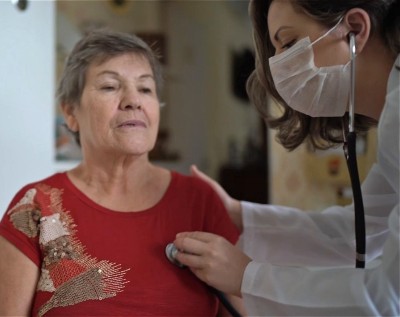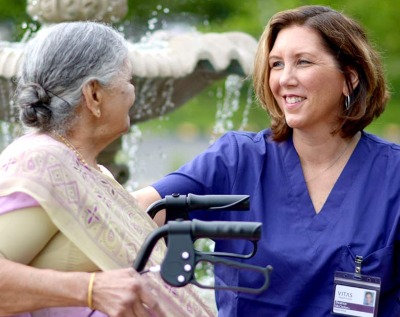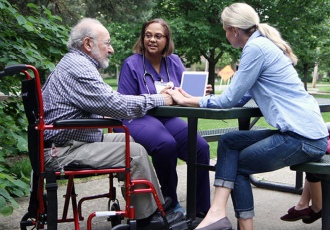By Joseph Shega, MD, Chief Medical Officer, VITAS Healthcare
As a fundamentally patient-and-family-centered care model, hospice provides patients with improved clinical outcomes, improved pain control, reduced physical and emotional distress, and the ability to spend their last days at home, among loved ones.
A new report from NORC at the University of Chicago (NORC) found that greater utilization of hospice during the last six months of life is associated with increased satisfaction and quality of life, while also reducing Medicare costs—$3.5 billion in savings in one year.
The Unparalleled Value of Hospice
Hospice uniquely provides a person- and family-centered care model. With hospice, patients are at the center of the care continuum. They can spend their last months, weeks, and days of life at home surrounded by loved ones. Enrollees in hospice report overall better quality of life, while experiencing fewer burdensome care transitions.
By investing in serious illness care, we are also able to increase the quality of end-of-life care.
Hospice care entails foregoing continued curative treatments, with care instead focusing on aggressive interventions, treatments, and services to manage symptom severity, reduce pain, and manage the terminal illness and related conditions in the setting of choice—wherever the person calls home. Patients using hospice benefit from holistic care provided by an interdisciplinary team that works together to address their physical, psychological, social, and spiritual needs.
While the holistic and qualitative benefits of hospice are immeasurable, there are quantifiable benefits as well. The NORC study shows that over the last 12 months of life, as hospice use increases, total spending decreases relative to non-hospice. The reduction in costs when patients across all disease classes use hospice can be significant, up to 25% in Medicare beneficiaries with CKD/ESRD who used hospice.
Notably, in the last year of life, hospice usage reduces the total costs of care for Medicare by an estimated $3.5 billion a year.
Avoiding Unwanted, Burdensome Treatments
Hospice helps patients avoid burdensome, unhelpful, and potentially harmful treatments at end of life that may require continued and repeated hospitalizations and emergency department visits. These interventions often result in over-medicalized care that contributes to discomfort, functional decline, and increased costs, without prolonging life.
Healthcare professionals should initiate compassionate conversations early on in the care process with patients and families to share information and educate them on the nature of the hospice benefit and what it entails, to ensure that their end-of-life needs and wishes are met.
If a patient is hospice-eligible, early discussion and a timely referral are paramount.
Resource: Hospice eligibility guidelines >
Longer Stays: The Key to Maximizing the Benefits of Hospice
Earlier enrollment and longer lengths of stay help patients maximize the benefits of hospice. Many Medicare beneficiaries do not use hospice at all or use it for a very short period of time. These short lengths of stay, while still beneficial compared to not receiving hospice at all, are not long enough to reap full benefits of the holistic care model.
Hospice care improves patient outcomes—better symptom relief, goal attainment, and quality of life—with longer hospice stays experiencing the highest quality of life outcomes. NORC’s analysis found that Medicare spending in the 12 months preceding death is consistently lower for beneficiaries with lengths of stay of 15 days or more, and total Medicare spending for hospice patients with a length of stay of 6 months is lower than non-hospice decedents which continues for at least up to one year.
Raising awareness, informing, and educating patients and families about the hospice benefit and expanding earlier access will improve quality of life and care for millions of beneficiaries.
In addition to meeting the unique needs of patients, hospice care affords improved outcomes for family members, as well. Families benefit from education around the natural history of terminal illness, so that they know better what to expect and how to manage it. Individualized care plans include regular visits by the interdisciplinary team being adjusted by need with availability of 24/7 in-person after-hours support.
Family members of hospice patients compared to non-patients experience better emotional outcomes with less depression, anxiety, and burden, along with improved quality of life.
Improving Quality of Care and Quality of Life—for Patients and Families
Hospice improves the quality of care and quality of life of patients with many different terminal diseases, while supporting the needs and well-being of their family members. From increased satisfaction and quality of life, to improved pain control, to reduced physical and emotional distress, and reduced prolonged grief and other emotional distress, hospice offers multiple benefits to patients, families, and caregivers.
Many families often say, “We only wish we had chosen hospice earlier.”
Where VITAS Stands
At VITAS Healthcare, we understand the many ways that hospice improves quality of life for Medicare beneficiaries, and we are now glad to see that this proven framework also saves tax dollars. We support expanding earlier access to hospice care, across the most common causes of death in the US—heart disease, cancer, lung disease and dementia—which can greatly benefit from high-quality end-of-life care.
All hospice-eligible patients should have the opportunity to access hospice in a way—and for a length of time—that allows them to fully benefit from this unique care model.
By investing in serious illness care, we are also able to increase the quality of end-of-life care for millions of patients, families, and caregivers across the country.


